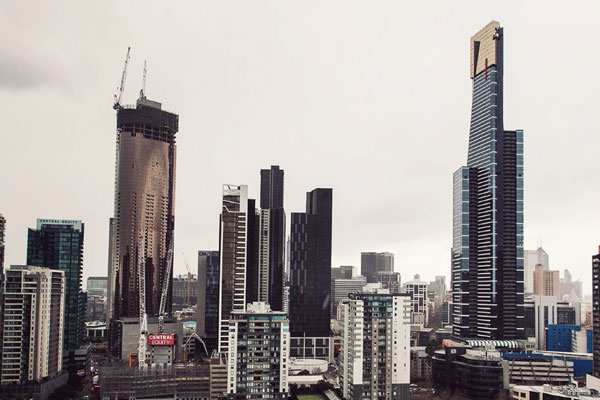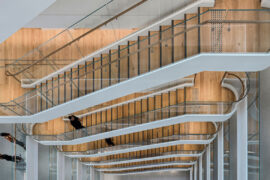The City of Melbourne’s Creative Spaces program is inviting expressions of interest from creative businesses to join their latest project in the heart of Melbourne’s Arts Precinct.

September 9th, 2014
As creatives, we have all been a part of the lifecycle of Australia’s inner suburbs, turning them from grungy, industrial or unloved urban landscapes into engines of creative production, then so often witnessing the transformation into ‘trendy’ residential enclaves stripped of the creative substance that made them desirable.
As Program Manager for the City of Melbourne’s Creative Spaces Program, Eleni Arbus has her own description for this process, “It’s the artist-as-dung-beetle model, where artists or other creatives move into contaminated areas or disintegrating buildings, clean them up, attract small innovative creative businesses like cafes, small clothing retailers and other artists and presto, Toorak tractors start cruising by their front doors with potential buyers staring in from behind locked doors,” she explains.
But with Creative Spaces’ latest proposal there is a new model afoot. In Melbourne’s newly anointed Arts Precinct – featuring Wood Marsh’s 2002 ACCA building, ARM’s Melbourne Theatre Company and Recital Centre, as well as the NGV, Malthouse and the Victorian College of the Arts – a recently completed residential development known as ‘Guild’ has provided an exciting opportunity for creative businesses.
“We are having to intervene in a different market,” Arbus says. “We have an arts precinct in an area that has extremely high land value.”
With over 1000m2 of ground-floor space at the Guild, Creative Spaces is attempting to correct this imbalance. The program is currently inviting expressions of interest for the spaces, looking for a healthy mix of creative business – creative producers, arts organisations, architects and product designers – to take advantage of the publicly accessible space.
“Creative Spaces is exploring a new model with the Guild. We have an opportunity where a thousand square meters of space exists in the arts precinct that could either go to IGA or Coles Express or can be offered to creative users who are capable of paying a bit more for their space than the average artist. The Guild is not, strictly speaking, an ‘affordable housing project’ like River Studios or Boyd. It’s seizing an opportunity to put creative people and organisations in close proximity to the facilities and audience they need’.
Download the Guild EOI here.
creativespaces.net.au/the-guild
INDESIGN is on instagram
Follow @indesignlive
A searchable and comprehensive guide for specifying leading products and their suppliers
Keep up to date with the latest and greatest from our industry BFF's!

Welcomed to the Australian design scene in 2024, Kokuyo is set to redefine collaboration, bringing its unique blend of colour and function to individuals and corporations, designed to be used Any Way!

For Aidan Mawhinney, the secret ingredient to Living Edge’s success “comes down to people, product and place.” As the brand celebrates a significant 25-year milestone, it’s that commitment to authentic, sustainable design – and the people behind it all – that continues to anchor its legacy.

London-based design duo Raw Edges have joined forces with Established & Sons and Tongue & Groove to introduce Wall to Wall – a hand-stained, “living collection” that transforms parquet flooring into a canvas of colour, pattern, and possibility.

As the Official Platinum Partner of the 2017 INDE.Awards, Zenith is bringing the entire Asia Pacific region together!
The internet never sleeps! Here's the stuff you might have missed

As French-Lebanese Architect Lina Ghotmeh prepares for lectures in Melbourne and Sydney, we hear about the philosophy shaping her internationally celebrated practice.

Brad Krauskopf, CEO & Founder of Hub Australia, tells us about Hassell’s design for Hub Australia Martin Place.